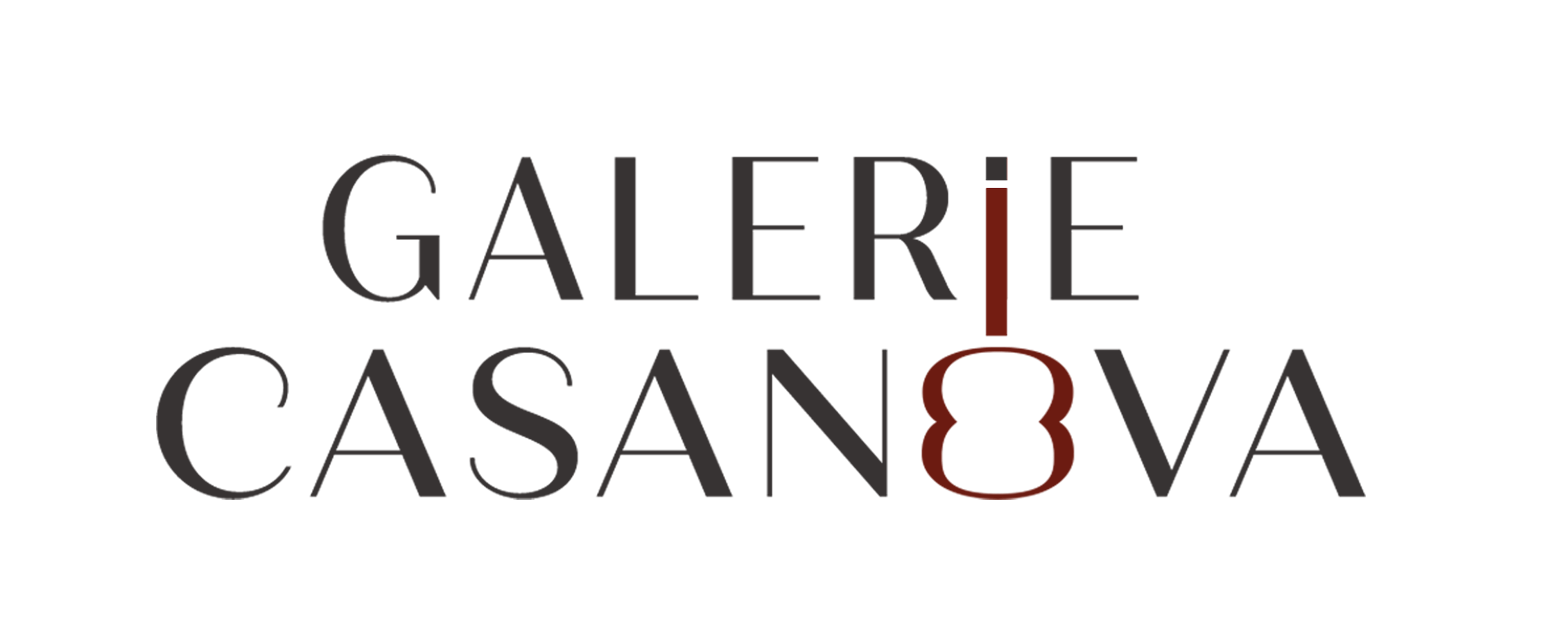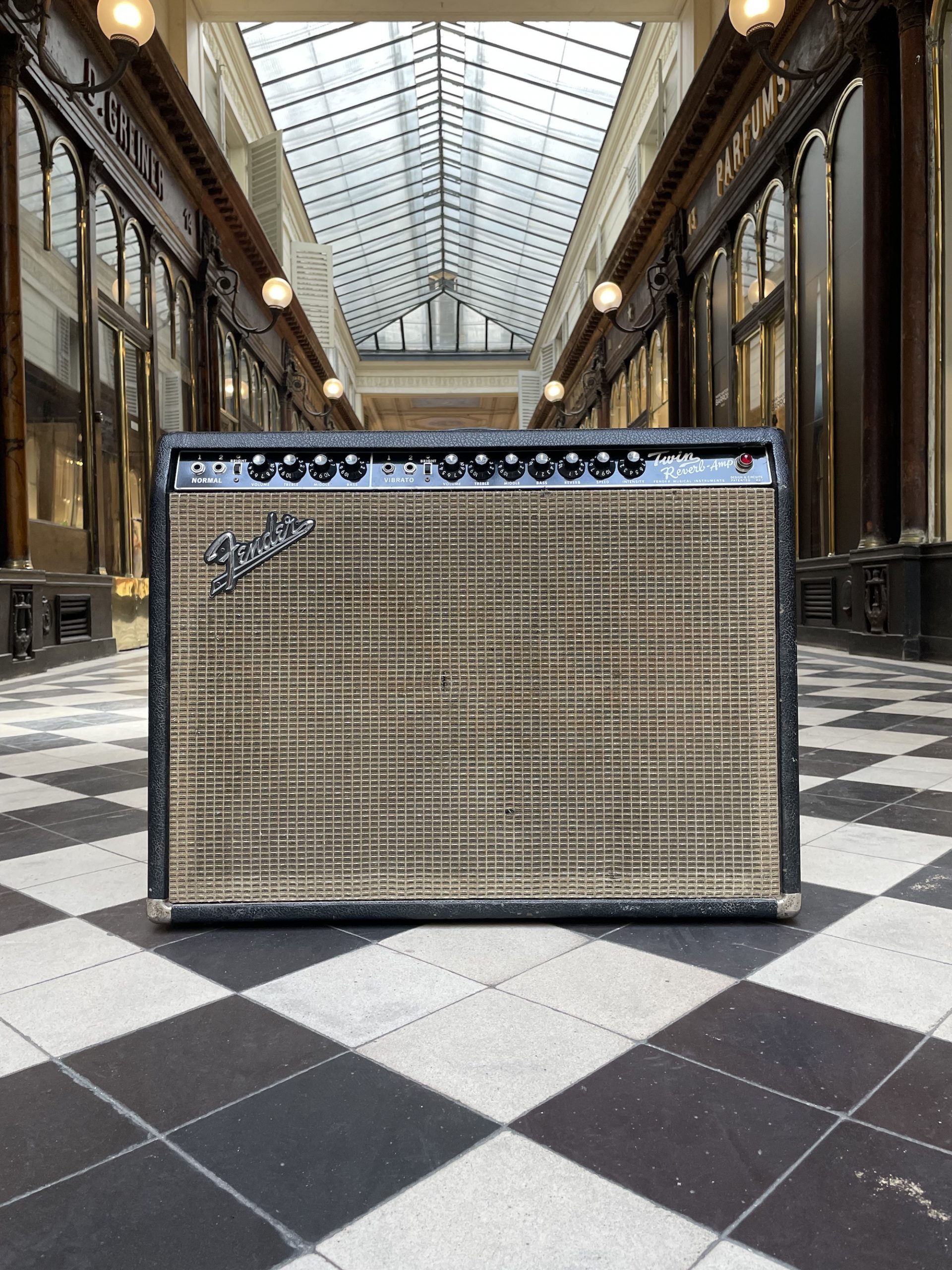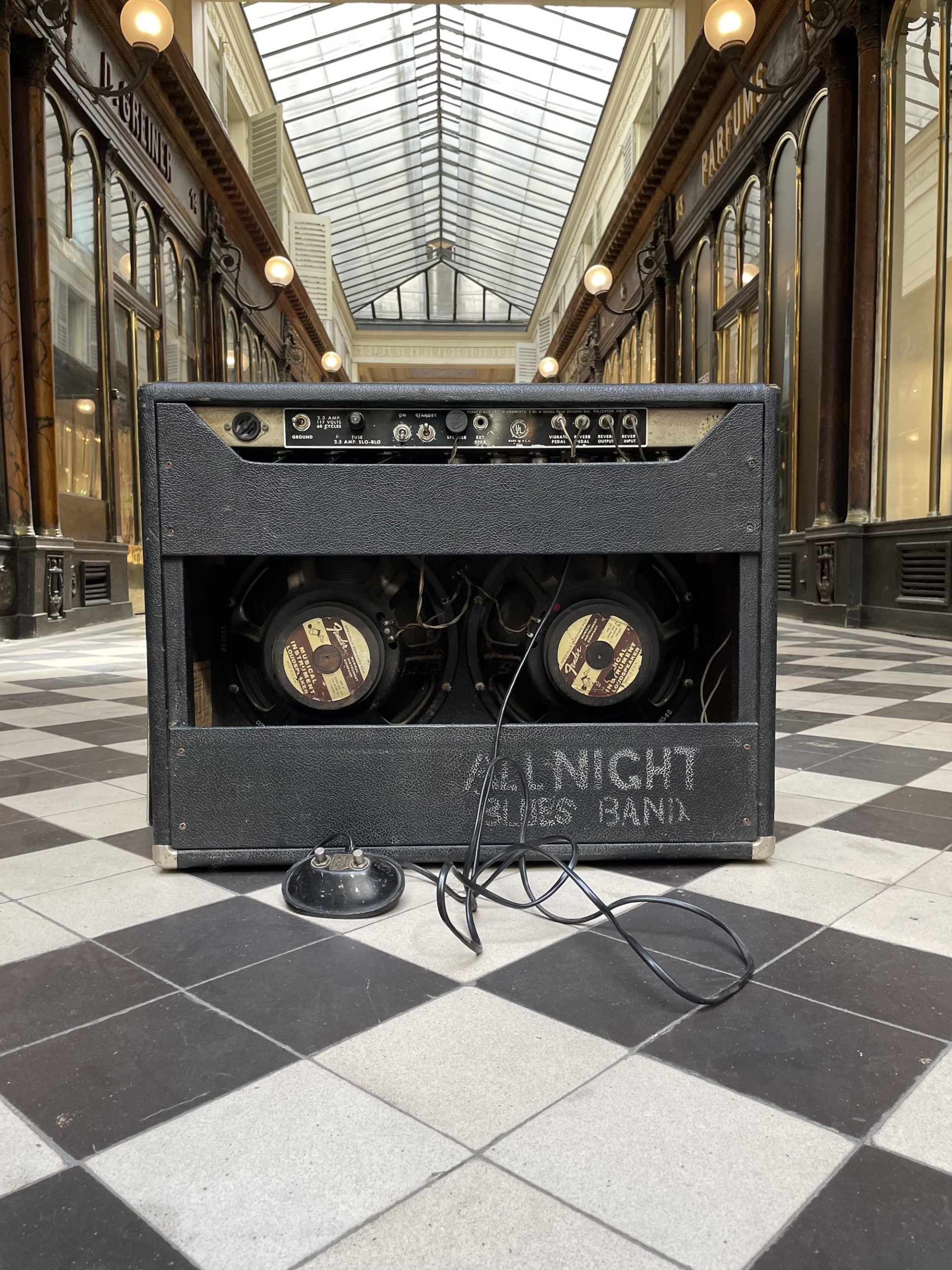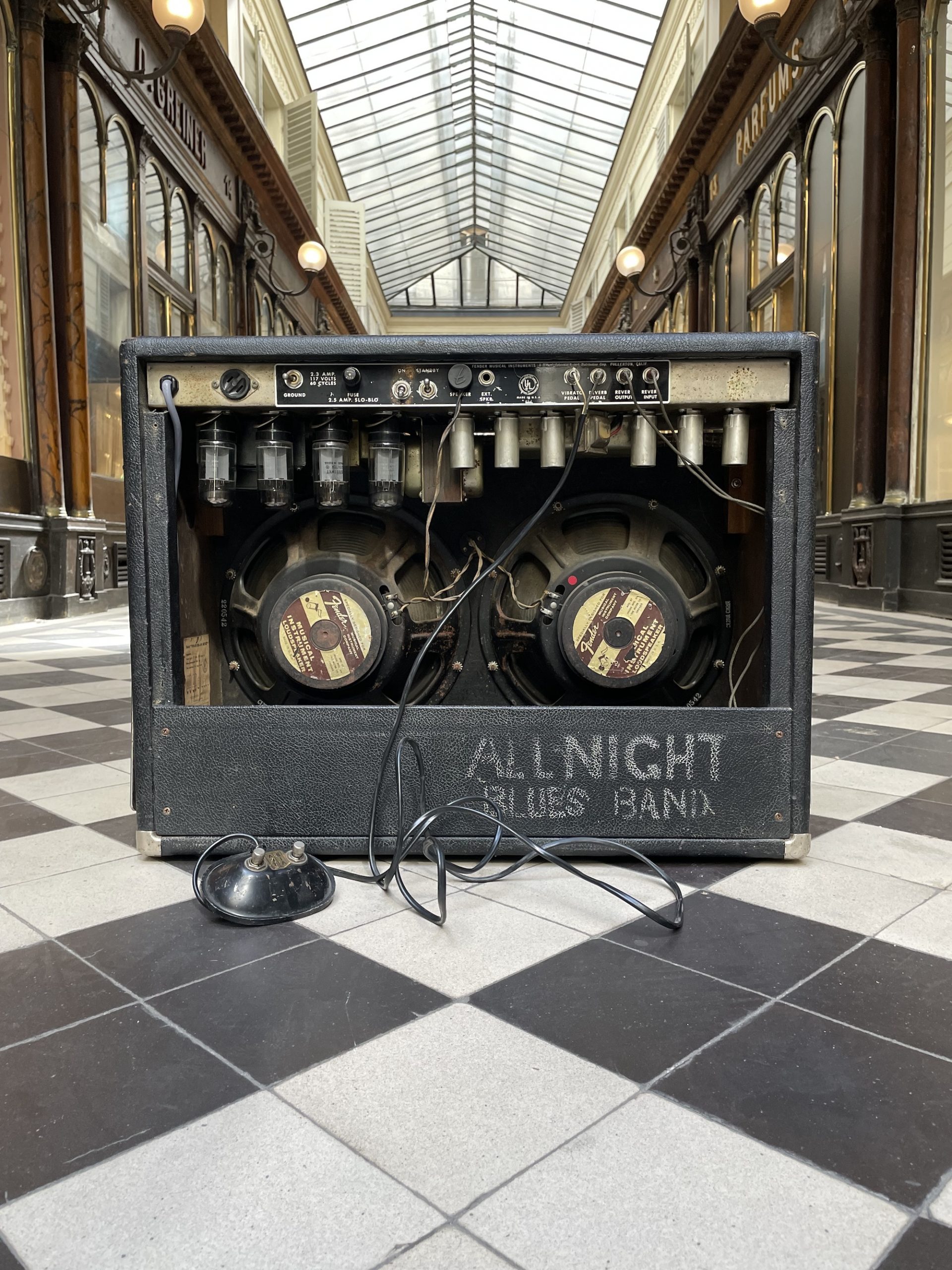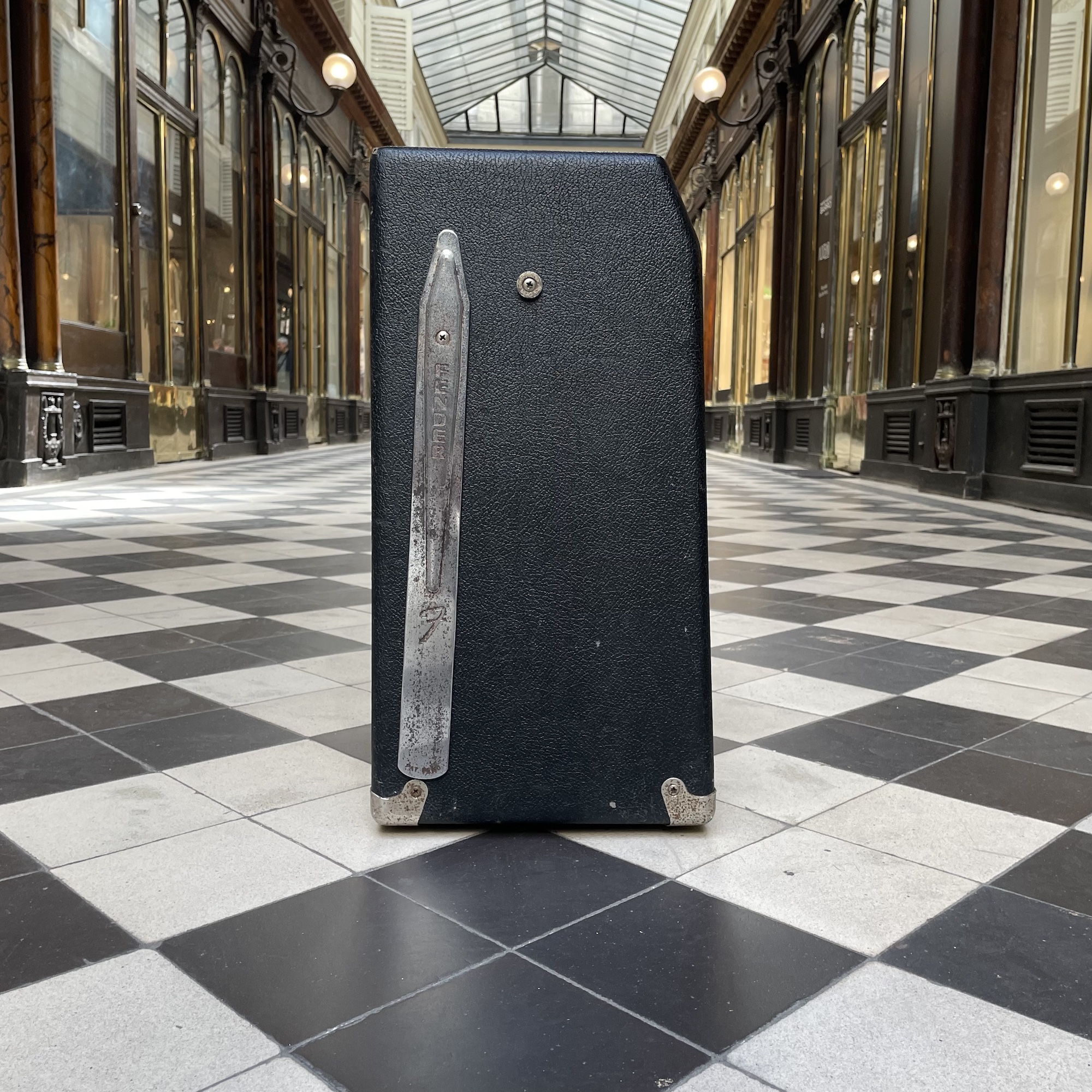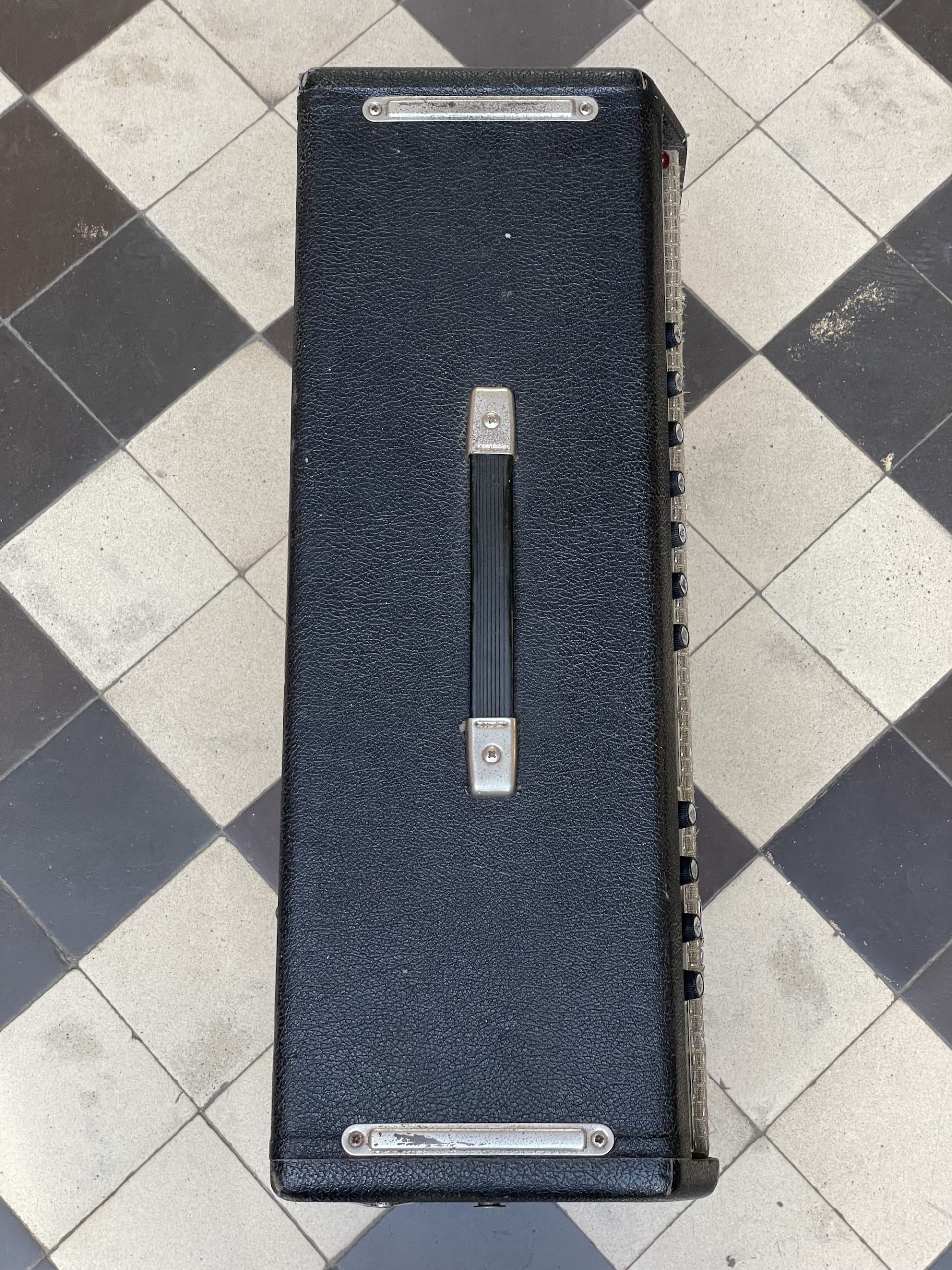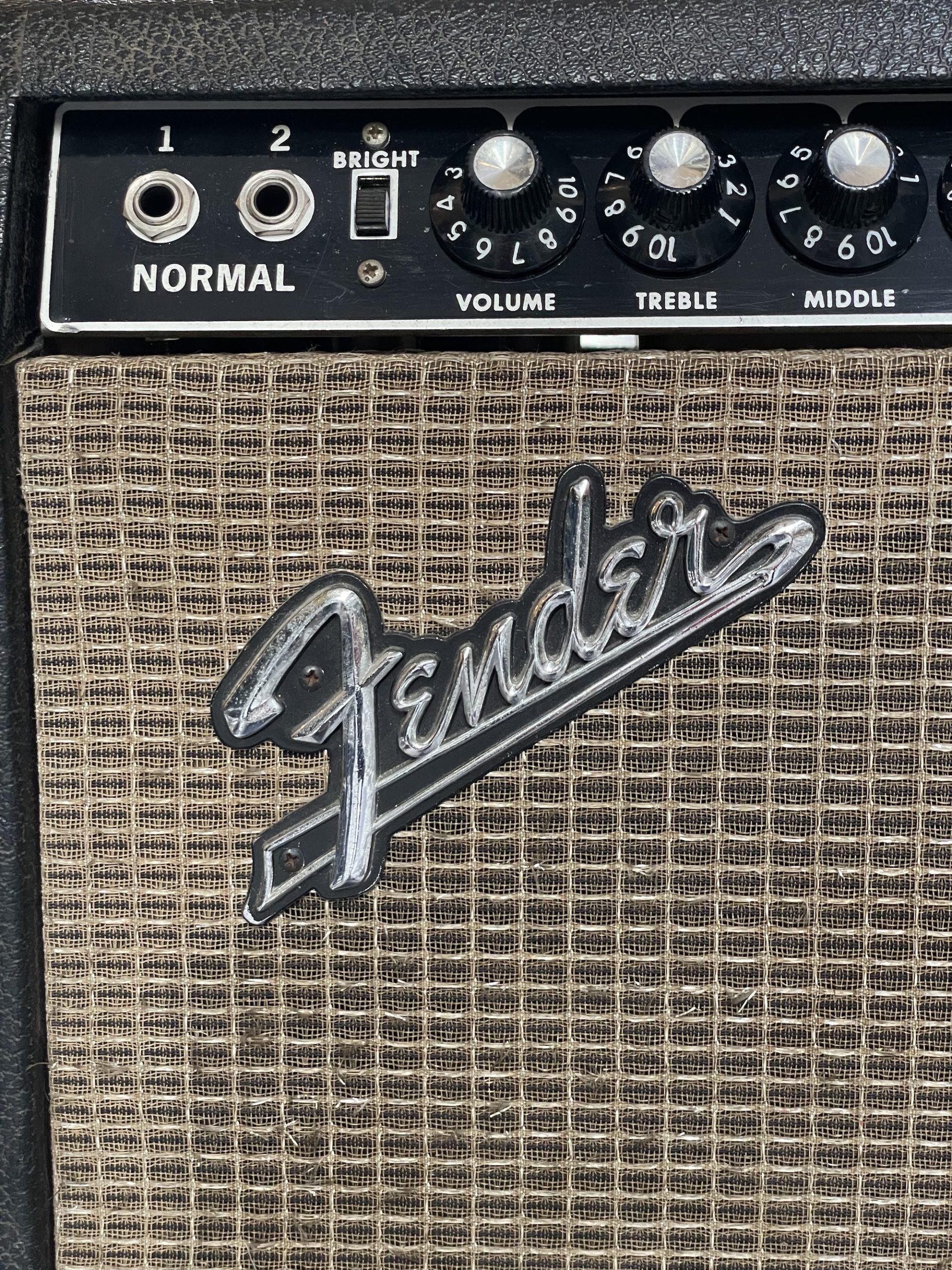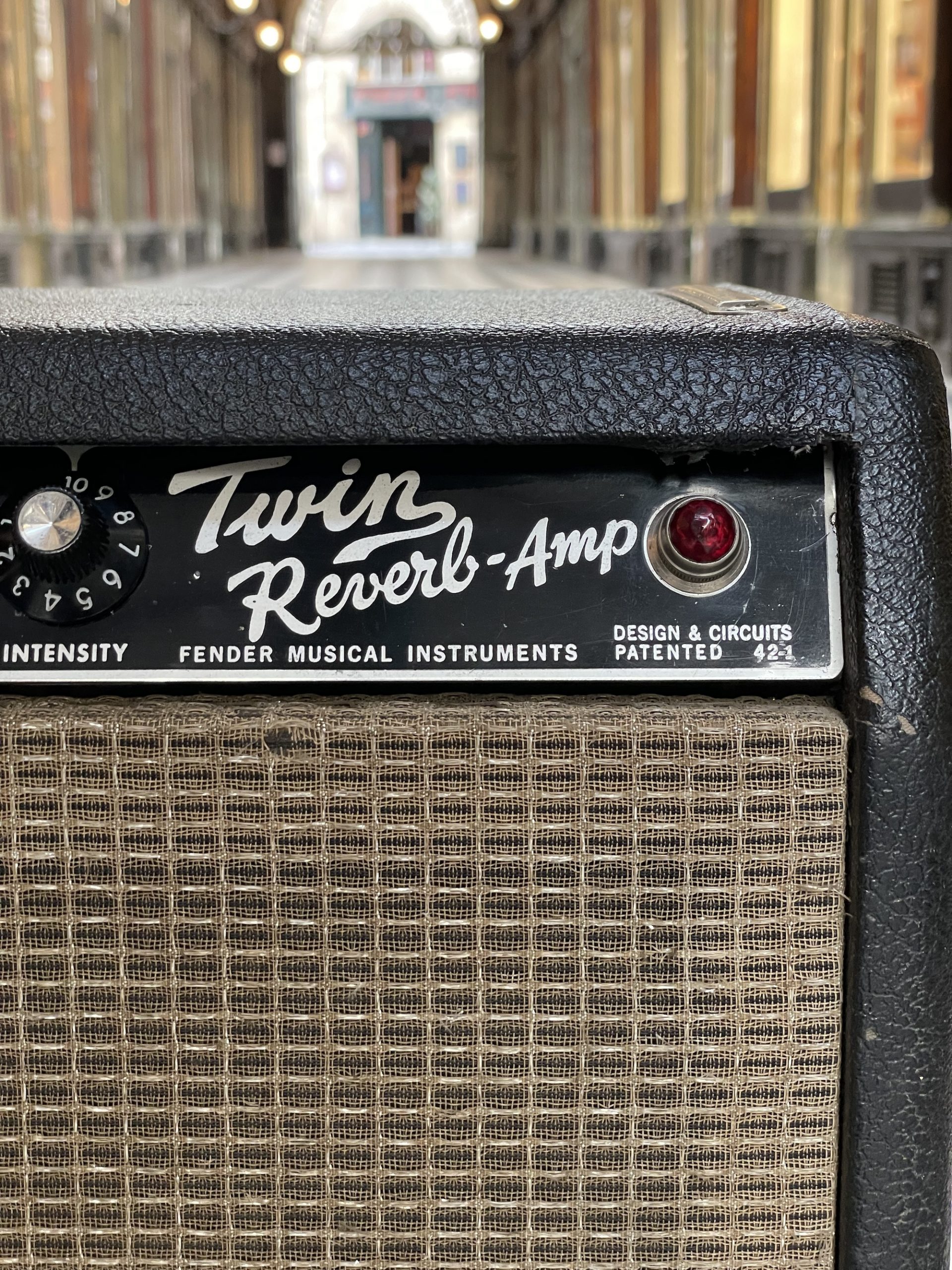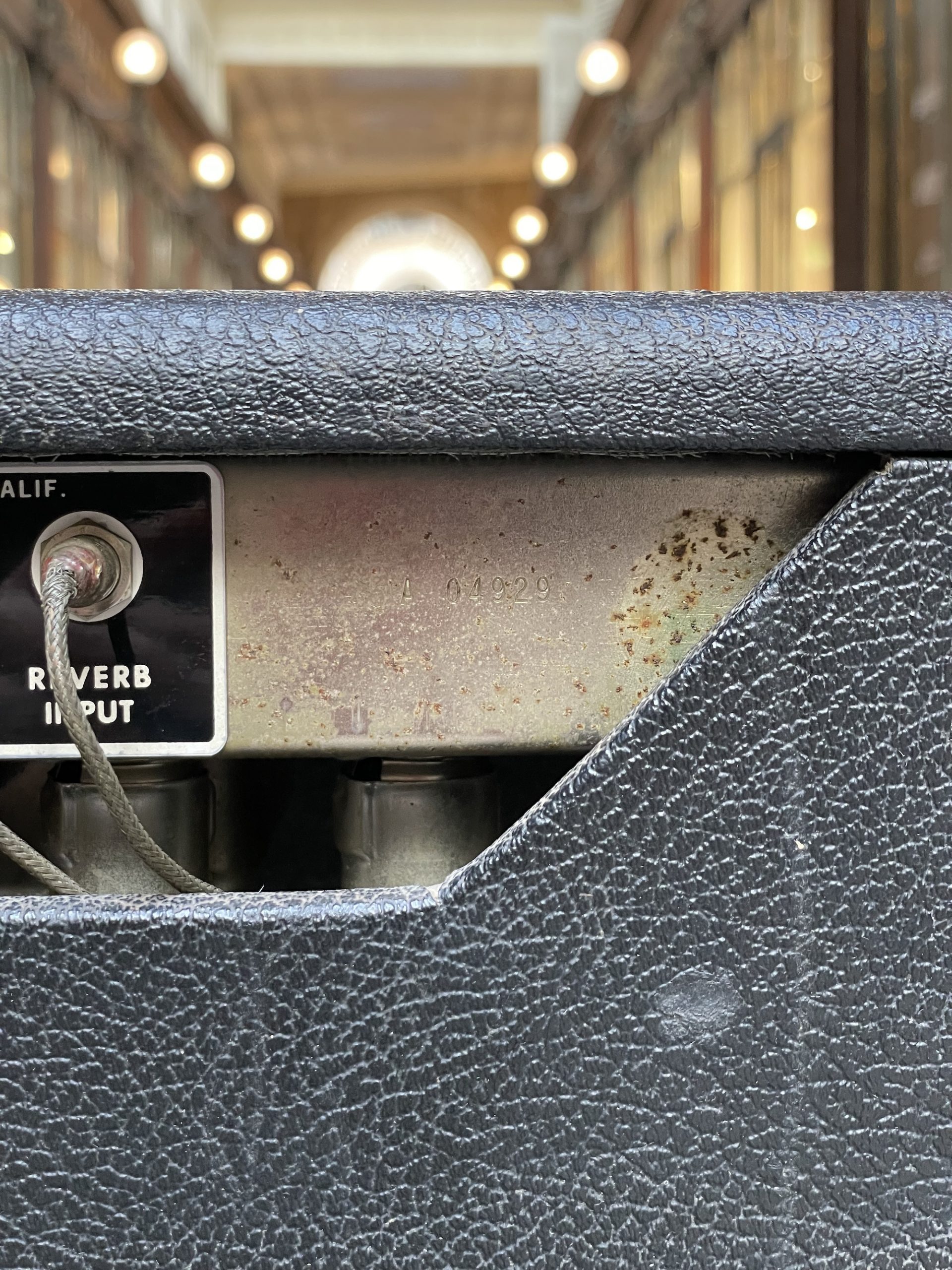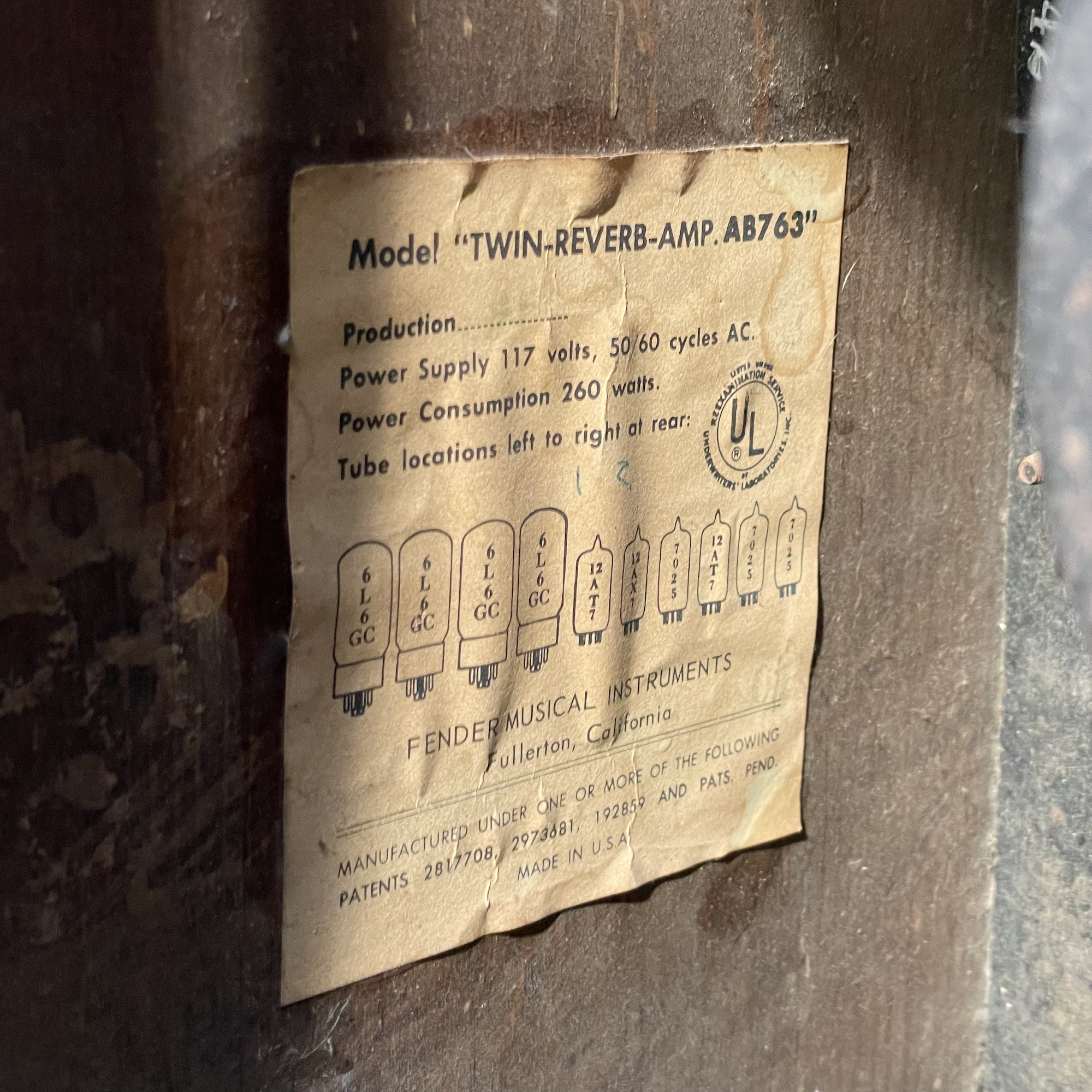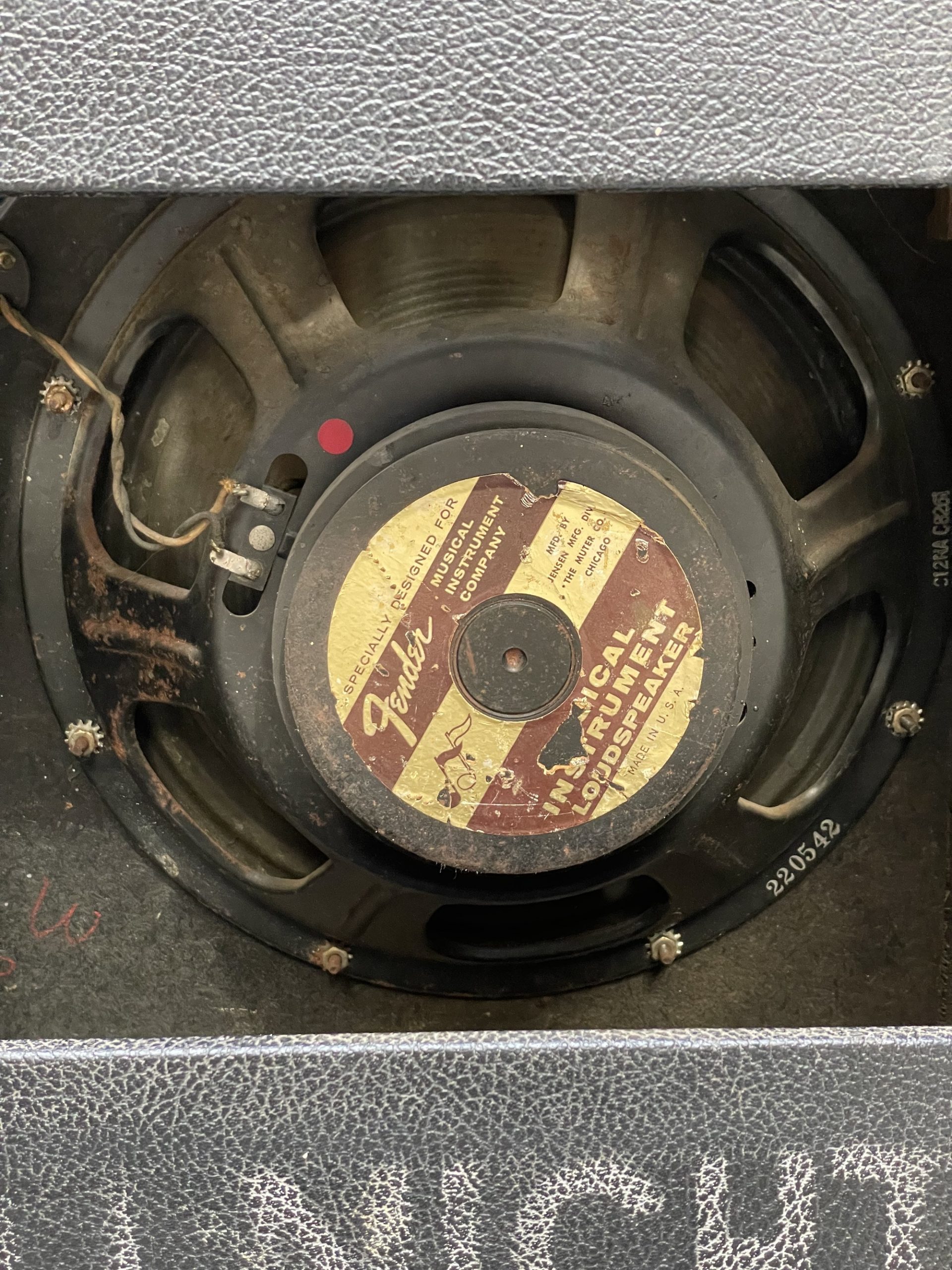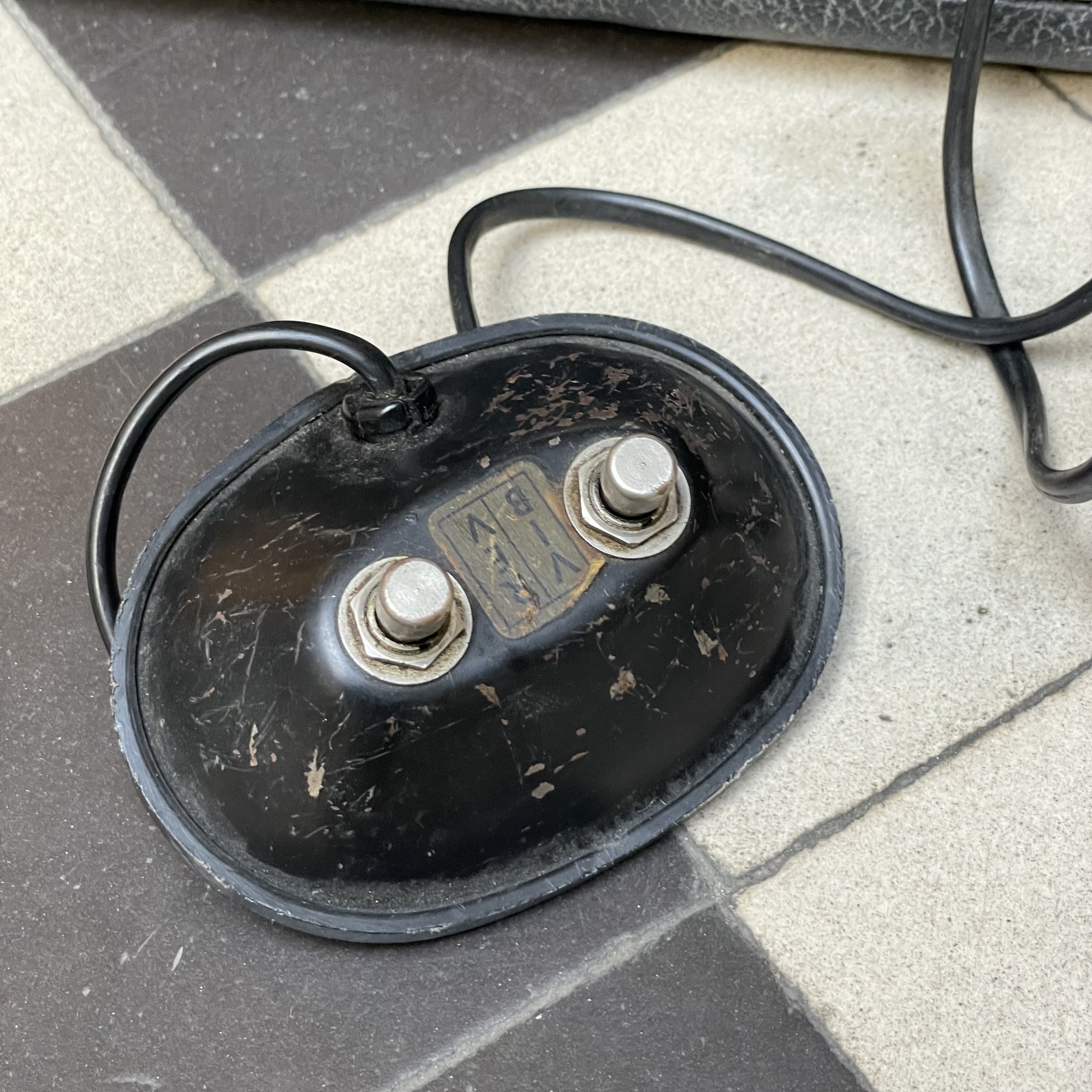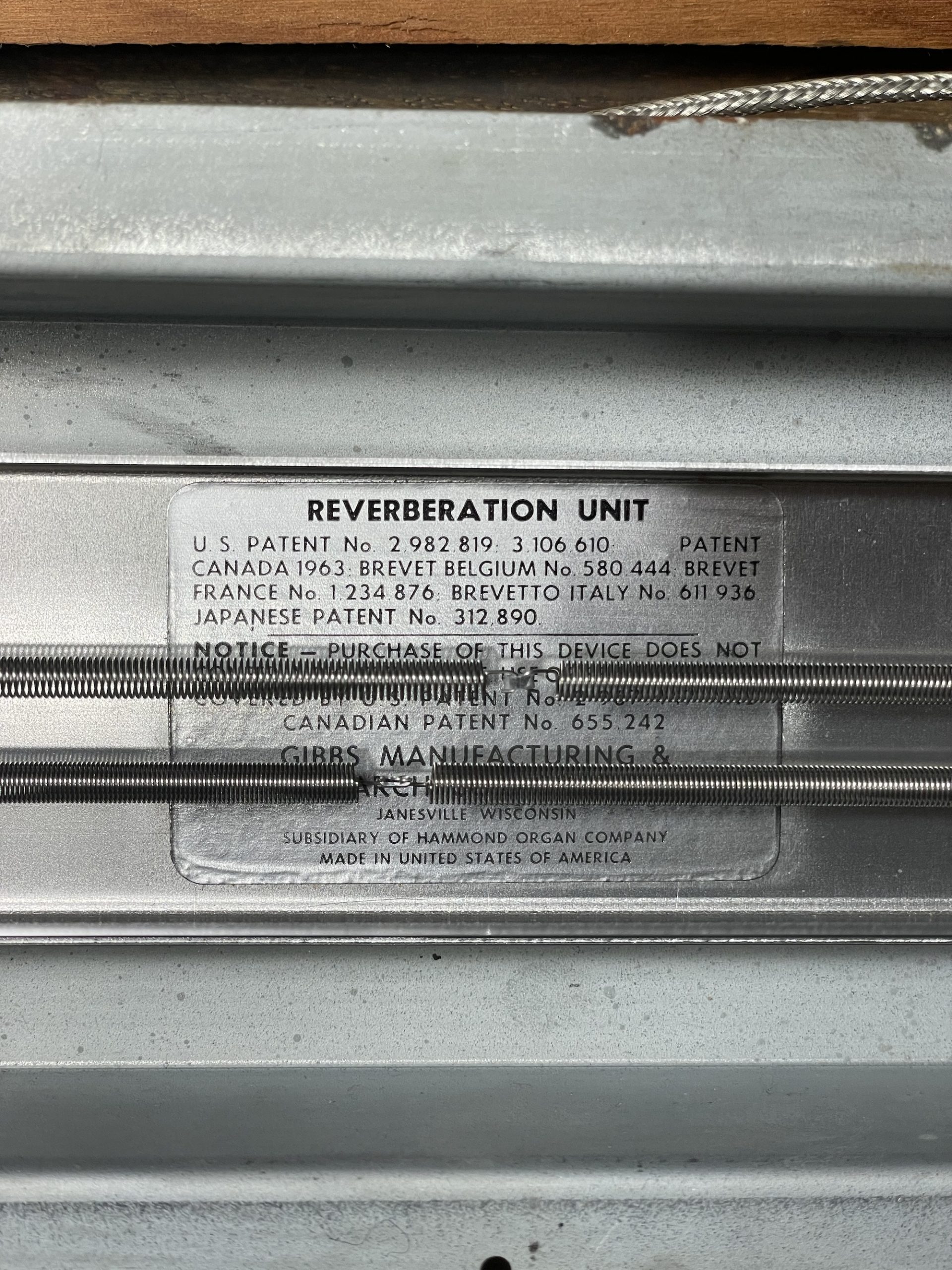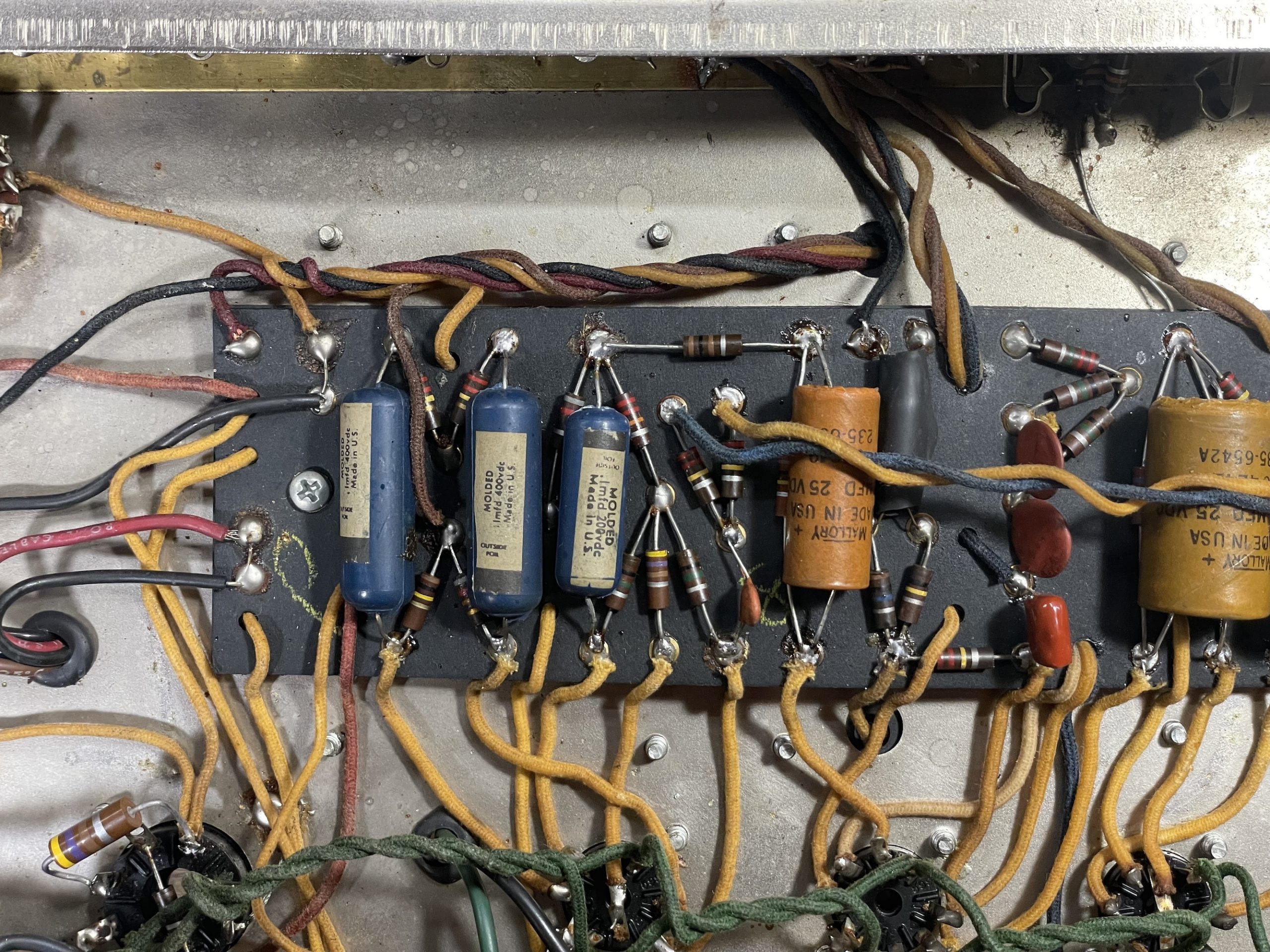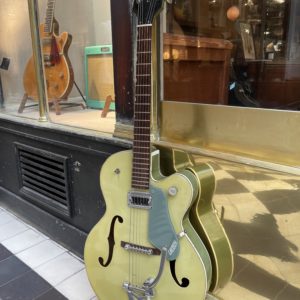1965 FENDER TWIN REVERB-AMP AB763
€5.950,00
In stock
The prices indicated correspond to the price in the case of payment in-store or by bank transfer. In the case of payment by credit card via the website, a processing fee of [3.25% + €0.25]* will be applied to the total amount of the basket, including delivery costs.
Superb 1965 Fender Twin Reverb-Amp AB763 amplifier, produced at the beginning of the Fender-CBS era, in excellent condition.
Along with the Deluxe Reverb, the Twin Reverb is one of the absolutely iconic models produced from the mid-1960s onward, whose sound is intimately linked to the music of that period. For many musicians, vintage Fender amp enthusiasts, and experts, the Twin is considered the epitome of the genre and has always held the position as the highest-end combo offered by the Fullerton-based manufacturer. Where the Deluxe Reverb found a warm spot in surf music and rock ‘n’ roll bands, the Twin was favored by country & western and jazz musicians due to its ability to produce a clean, crisp, and clear sound, completely free of distortion, even at very high volumes—a requirement for live performances at a time when modern PA systems had yet to be developed, and the amplifier alone had to carry over the banging of a drum kit and be audible to the entire audience.
The history of the Twin can be traced back to 1952, when it was introduced a few months after the Bassman. Denoted Hi-Fidelity amplifier and equipped from the outset with two 12-inch speakers, it took over from the Super-Amp and its 10-inch speaker pair at the top of the guitar amp range. Its circuit was constantly refined throughout the tweed period to make it the ultimate amplifier for stage use, going from 15 to 50 watts between ’52 and the mid-fifties – before being equipped with a quad of power tubes allowing it to develop almost 100 watts under the 5F8-A version (often to the detriment of its speakers, not yet robust enough to withstand such power)! After a transition to brown then white tolex in the early sixties, we finally arrive in the summer of 1963 at the winning combination as we find it on the example presented here: black tolex and control panel, addition of a tube spring reverb, three-knob tone with a Middle control, and addition of the Bright switch allowing to block or pass the high frequencies at the preamplifier level. It’s also worth noting that the tremolo circuit was revised, moving from the three-tube harmonic tremolo of the Brownface era to the photocell tremolo affecting the signal level at the preamplifier output. Also noteworthy is the diode rectifier circuit, implemented on the Twin since the early 1960s, which is the secret to its success: even when the unit is heavily loaded with large dynamic variations, the diodes provide a stable high-voltage supply that maintains the clarity of the sound—unlike models equipped with a rectifier tube like the Deluxe, which tend to compress in such circumstances (which can be very musical, but not always desirable).
This amplifier was assembled at Fullerton in the last months of 1965, with the chassis dated late November of that year and the cabinet late December. It remains to this day in superb original and well-preserved condition, with the exception of the power transformer which was replaced in the 90s by a part intended for 230V mains voltage (it can therefore be used in Europe without any other external voltage transformer). The rest of the transformers (including the often burnt-up output transformer) as well as the two Jensen C12NA speakers are original, so that the entire sonic identity of the instrument is retained. Before reaching us, the power cord had been replaced by a modern three-prong cord with an Earth and two filter capacitors had been changed. With the rest of the original components present, we meticulously applied ourselves to the complete restoration of the circuit, taking care to preserve as much as possible the aesthetic appearance of the original circuit: all the chemical capacitors, defective after 60 years of use and major troublemakers for the good health of an old amp, were replaced by high-quality modern parts; the coupling capacitor to the chassis death cap was removed; all resistors were measured and checked according to original spec, as well as all solder points to ensure the proper functioning of the circuit. Finally, the amplifier has completely cleaned, the tube bases, jack sockets, switches and potentiometers lubricated, in order to restore all of the device’s sonic qualities and allow for safe operation. Currently set up with a paired quad of modern 5881 Sovtek brand output tubes (equivalent to the 6L6 initially specified), the bias has been adjusted to ensure a good lifespan. The other 12AX7 and 12AT7 tubes are a mix of vintage and modern parts, all tested and measured, and exhibit good emission characteristics to this day. The tolex covering the cabinet remains in excellent condition, as does the grille covering the front of the unit. Finally, the set is completed by the original footswitch.
A peerless amplifier that will find its place in any studio requiring a clean sound with good dynamics and accurate sound reproduction across the entire frequency range—or for strong-armed musicians, who will find this Twin Reverb to be a reliable tool for the stage with the authentic sound of the 1960s.
